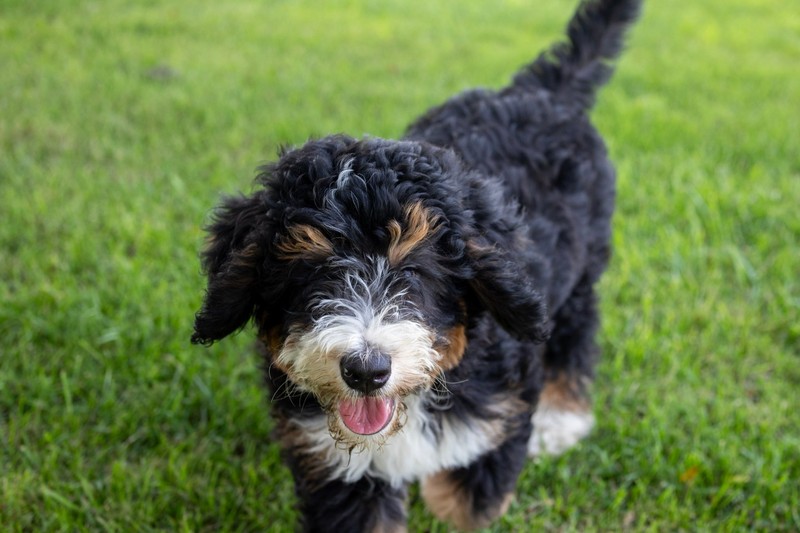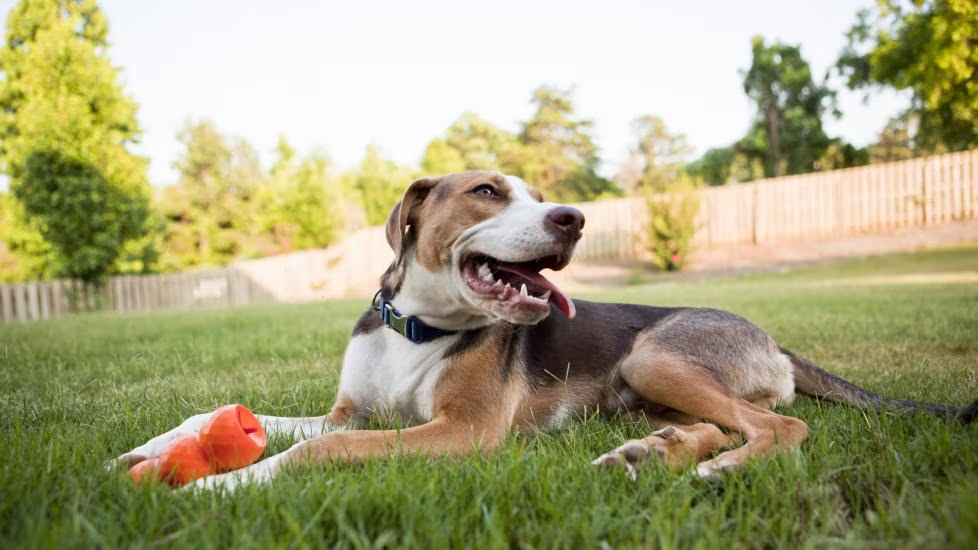You know the drill: you open the door after a long day, and whoosh! There’s your four-legged missile of love, launching full throttle into a hello hug that, while adorable, might knock you or your guests back a step or two. It’s a common scenario in the dog-loving world.
Dogs jumping on people can range from a slight nuisance to a risky behaviour, especially with larger breeds such as Labrador Retrievers or Huskies. But fear not! With some understanding, patience, and the right strategies, you can teach your dog more polite ways to express their joy and affection.
Why Dogs Jump On People
First things first, let’s sniff out why dogs jump on people. It’s not just about excitement or scoring those high-fives; it’s deeply rooted in doggy dialogue. Dogs naturally greet each other nose-to-nose.
Since we’re taller, jumping is their way of saying, “Hey, I’m here! Let’s be friends!” or “I missed you!” It’s also a sign of seeking attention and, sometimes, asserting dominance. Recognizing these motives is step one to tailoring your training approach.
Training Strategies
Starting with Prevention
Prevention is like teaching good manners from the get-go. It involves setting up situations where your dog learns the right way to greet humans without the jump-scare.
- Knee-High Greetings: Encourage your dog to sit or stay calm before saying hello. Only allow guests to pet them when all four paws are on the ground.
- Consistent Commands: Use commands like “sit” or “no jump” consistently. Ensure everyone in your household does the same to avoid confusing your pooch.
Positive Reinforcement
Dogs live for your approval (and treats, let’s be real). When they greet you or others without jumping, make a big deal out of it with praises, pets, or treats. This positive reinforcement makes them more likely to repeat the behaviour.
- Treats at Nose Level: Keep treats handy to encourage nose-level greetings. Reward them when they resist the urge to jump.
- Affection as a Reward: Sometimes, a good belly rub or ear scratch is all they want. Give this as a reward for keeping all paws on the ground.
Discouraging the Jump
What dogs want most is attention from us and a reward for their actions. When your dog does jump up, the key is to make it unrewarding.
- Turn and Ignore: If they jump, turn your back immediately and ignore them until they calm down. No touch, no talk, no eye contact.
- Consistent Reaction: Everyone your dog meets should react the same way. Consistency is king in training.
Managing Energy
A hyper dog is a jumping dog. Ensuring your dog gets plenty of exercise and mental stimulation can significantly reduce jumping behaviour.
Daily Exercise
Exercise is not just about physical health; it’s a fundamental part of your dog’s mental well-being and behaviour management. An adequately exercised dog is less likely to engage in undesirable behaviours, including jumping, because they’re simply too tired or content to bother.
- Understand Your Dog’s Needs: Different breeds have different energy levels and exercise requirements. While a Border Collie might need extensive play sessions and a good run, a Bulldog might be content with a leisurely walk. Tailor the exercise to suit your dog’s needs.
- Incorporate Variety: Just like humans, dogs can get bored with the same routine. Mix things up by introducing new routes for walks, different parks, and varied play activities. This not only keeps exercise exciting but also stimulates your dog’s mind.
- Play Time: Interactive games such as fetch, tug-of-war, or hide and seek can significantly contribute to your dog’s physical and mental exercise. These games also strengthen the bond between you and your dog.
- Agility Training: This is a fun way to burn energy and teach discipline at the same time. You can set up a simple agility course in your backyard or join a local club.
Mental Stimulation
A mentally stimulated dog is a calm dog. Mental exercise can tire a dog just as much as physical activity, if not more.
- Training Sessions: Regular training sessions challenge your dog’s mind. Teaching new tricks or reinforcing old ones requires concentration and focus, which can be surprisingly exhausting for a dog.
- Puzzle Toys: Toys that require dogs to solve puzzles for treats are fantastic for mental stimulation. They keep dogs engaged and reward problem-solving skills.
- Sniffing Walks: Allow your dog to take ‘sniff walks’ where they can explore and investigate their surroundings. Sniffing is a natural behaviour that provides mental stimulation and tires them out.
- Socialisation: Interacting with other dogs and people is not only essential for behavioural development but also provides mental enrichment. Social play can be both physically tiring and mentally satisfying.
Conclusion
Turning your enthusiastic greeter into a polite welcomer is entirely possible with the right approach. Understanding why your dog jumps, combined with consistent training, positive reinforcement, and managing their energy, will go a long way. Remember, it’s not just about stopping a behaviour but teaching your dog a better way to express their happiness and affection.
Start implementing these strategies today, and you’ll see a difference in how your dog interacts with people. It’s not just training; it’s building a bond of mutual respect and understanding. And isn’t that what having a dog is all about?




